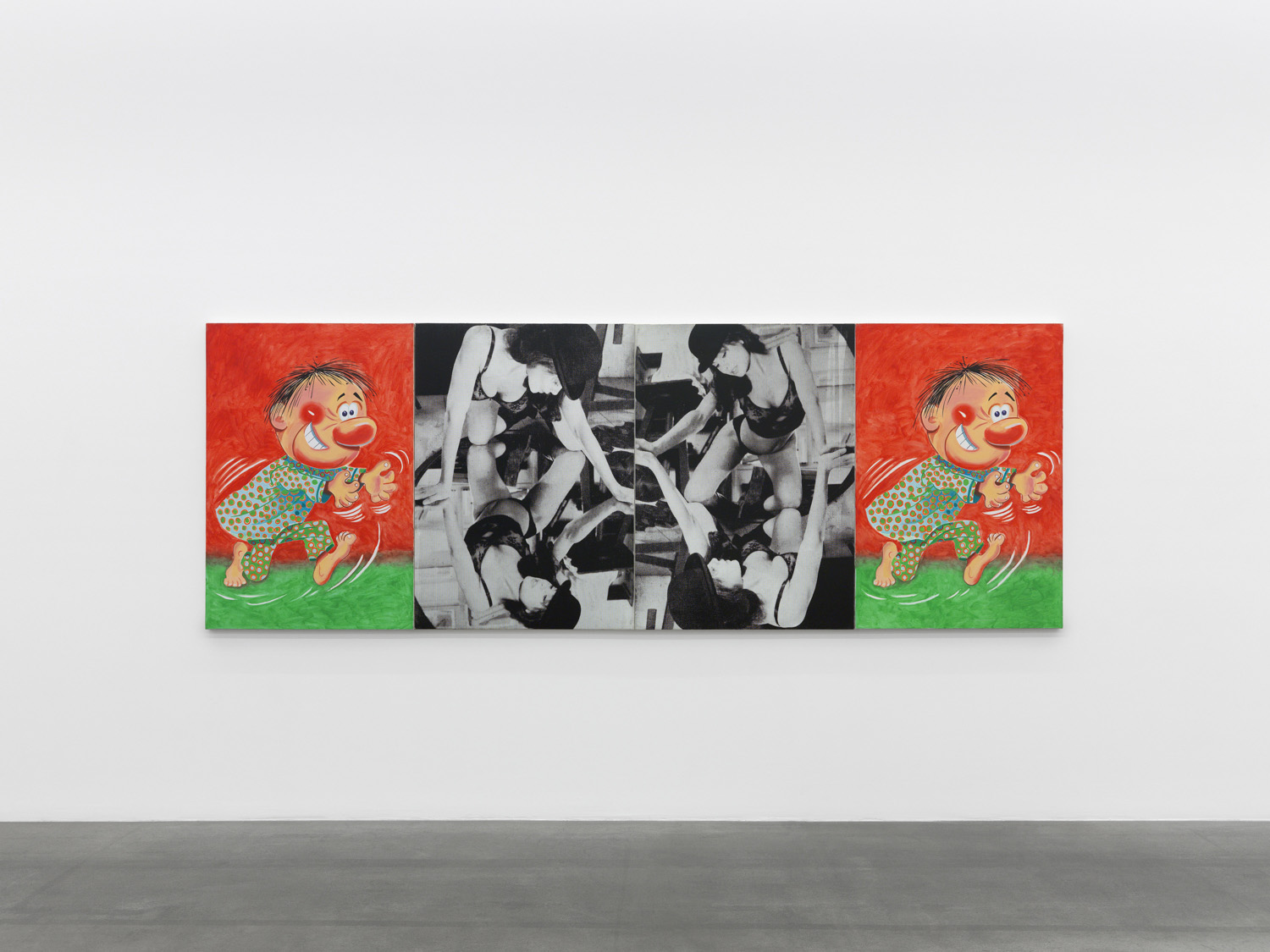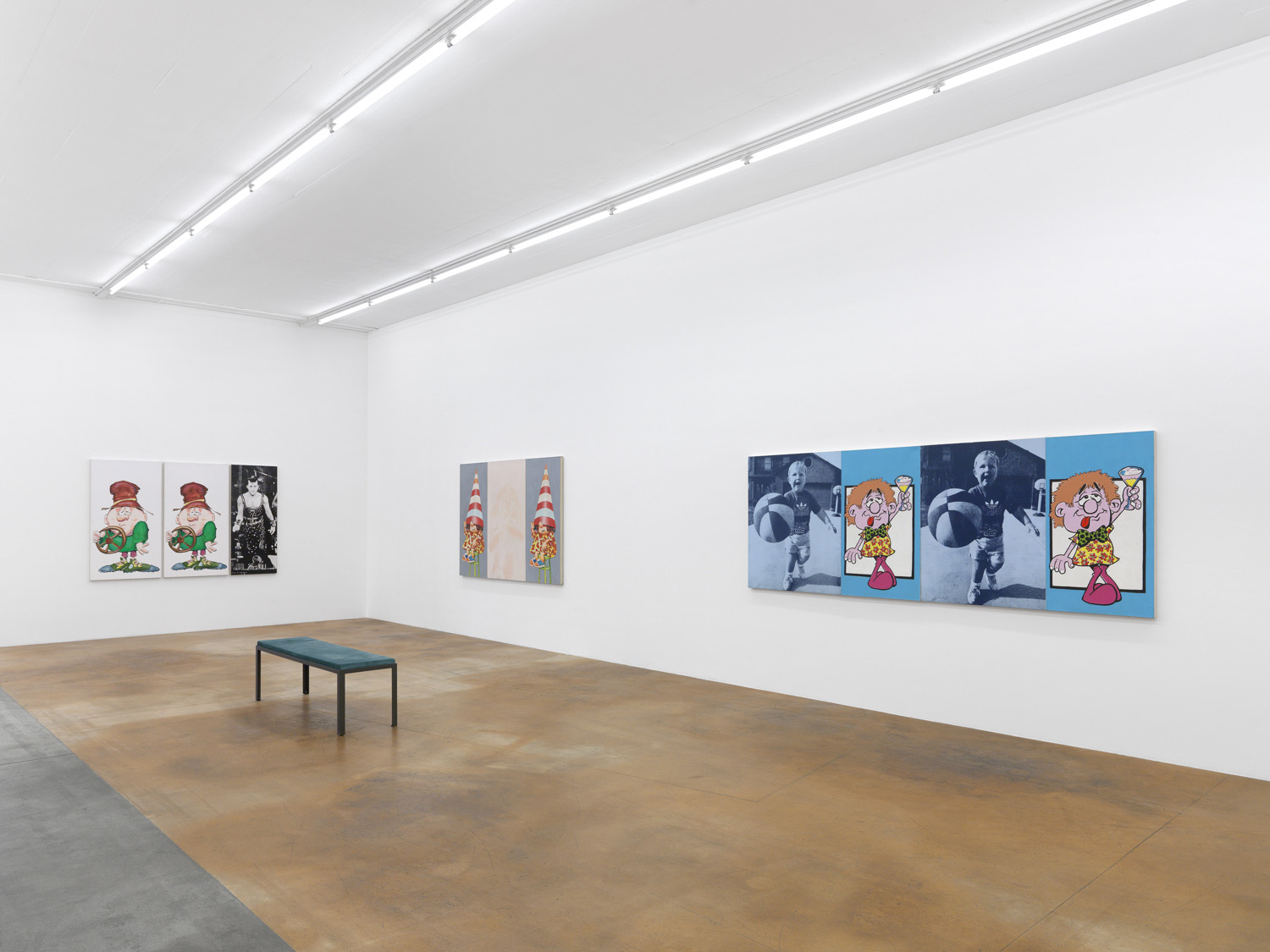Julia Wachtel (b. 1956, New York) is part of a generation of artists interested in the representations conveyed by modern consumer society and the transformation of the image in the age of mass media. Known as the “Pictures Generation” (named after the 1977 New York show organized by Douglas Crimp and the Met’s exhibition of 2009), these artists take Pop Art and Andy Warhol’s revolutionary mass-marketing techniques as the starting point for a new relationship with the image, analyzing the processes by which a language once considered the preserve of art (such as Surrealism) has been appropriated by advertisers and marketers. In turn, these artists copy, repurpose, and quote as a way to push back against these processes and reappropriate the space of representation.
The Pictures Generation includes names such as Sherrie Levine, Jack Goldstein, Troy Brauntuch, Peter Nagy, and Robert Longo, as well as artists such as Dara Birnbaum, Gretchen Bender, and Sarah Charlesworth. In 1985, a group of these artists exhibited their works in a show entitled Infotainment (a term for media content that combines information and entertainment), which David Robbins, one of the organizers, described in the following terms: “For the children of Barthes and Coca-Cola, television affords the opportunity to monitor consumer society from our bedrooms.” One of the most effective interpretations of the concept in that show, according to Bob Nickas, a leading critic of the period, was Wachtel’s contribution—a series of posters of celebrities overlaid with silhouettes that looked like shadows cast by the viewers.
In 1986, Wachtel produced Emotional Appeal, a series of paintings in which she “reappropriated” popular images from magazines, advertising, and greeting cards using vinyl emulsion, silkscreen printing, lacquer, and oil paint. She lined up these photographic reproductions and cartoon-like figures side by side, creating the impression of a cinematic sequence. Works such as You Disappear Me and A Dream of Symmetry, which form part of Wachtel’s Celebrity series (1987 onward), each include four canvases that seem to begin to tell a story and feature flipped (right/left) and reversed (positive/negative) images of celebrities. The repeated still of Lena Olin in The Unbearable Lightness of Being (Philip Kaufman’s film, based on Milan Kundera’s novel), surrounded by two paintings of a child-like figure, is akin to a Pop-art representation of Lacan’s mirror stage concept. Meanwhile, the crooked-toothed pirate in You Disappear Me, also painted in oil, appears to stare lustfully at various pictures of Cher in her stage costume. By juxtaposing and manipulating images in this way, Wachtel invites us to think critically about what these representations convey. In doing so, she reminds us that, from the perspective of art history, while appropriation is transforming the modern practice of collage in a fundamental way, it continues to affirm its revealing power—and that the artist has gone from being a producer to an editor of images.
- Curated by Lionel Bovier

